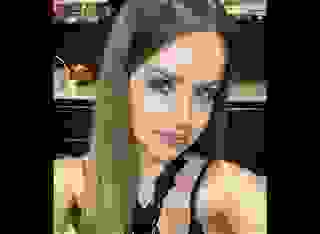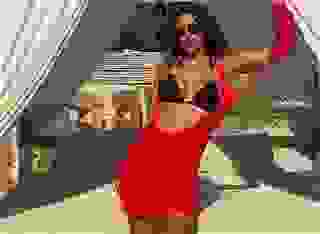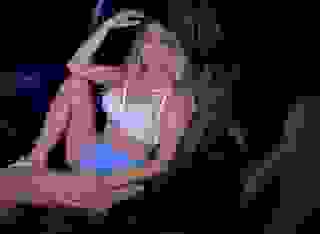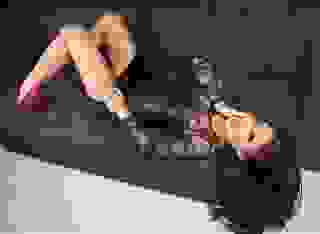- Sci-Fi & Fantasy
- Dry, No Lube - Appendices & Glossary
Note: You can change font size, font face, and turn on dark mode by clicking the "A" icon tab in the Story Info Box.
You can temporarily switch back to a Classic Literotica® experience during our ongoing public Beta testing. Please consider leaving feedback on issues you experience or suggest improvements.
Click hereNOTE:
So... I'm not terribly sure about posting this, but I've had more than a few comments and emails over the years about the history or background of Dry, No Lube. And since I've got copious material about that sort of thing, I thought I should post it for fan edification.
All eight or nine of you.
Here's an explanation of what you'll find here: at times, in order to square away my own thoughts about the continuity of this series, I'll write little treatises for myself. These take the form of in-universe narratives by historians, sociologists, or from military manuals, mostly because that's a conceit I admired in Dune. So, I cribbed it. Most of the shit in here that is NOT formatted that way is almost completely decontextualized, meaning it's more for me than for you guys. In those cases? Welcome behind the scenes.
Enjoy! I'll edit and update this "story" as needed.
Contents:
- A brief note about alien races.
- Background material on the social classes of colonized worlds.
- A sequence of how planetary colonization occurs.
- A general essay on clones.
- Information on military ranks and tactics.
- Material relative to Chapter 5, "Blitz." For some reason, I did a lot of world-building for that one.
- Material I wrote to provide information to guide the structure and doctrine of P/E ships like the Tirving.
- A treatise on how governments work in Pixy's universe.
- A glossary.
* * *
Alien races:
- Linders, an alien race able to two-fuck mutant-cocked humans. Generally bottom-heavy; useful for low-G environments. Very fluid movements, whispery voices. No sense of humor. They possess noseplates.
- Flasbards, bad guys.
- Antareans, odious and a PITA. They keep slaves,
- Cathos Vremein, a new enemy. Lives in the Oberon Arm. Primitive humanoids.
- Korlenes, who have telepathy and use it during sex.
- Tygons: fine green scales, sideways-blinking eyes. Humanoid. Penises are long and skinny and prehensile, and can cum on command until emptied. Testes are internal. Foul-smelling green semen. Yellow fangs and eyes. Generally pretty slight of build; adapted to high-G environments.
* * *
Notes relating to Subtle Redundancy, a universe connected to (and massively predating) Dry, No Lube:
On social classes and mores:
Citizens. These are full members of planetary society over 18. They can vote, hold registered property (as a direct share from the commandant), and breed without restriction. In return, they must pay taxes and do militia service. Once granted, citizenship is permanent. Always addressed as Mr/Ms, never by first name by non-citizens.
Domestics. These are contract members of the colony who shipped out below the age of 18. Citizenship is automatic at eighteen. They are often also apprentices, and in this particular colony they all are. Always addressed by first name by everyone.
Apprentices. These may be citizens or not, but they enter voluntarily into an apprenticeship that they can leave at any time. Their apprenticeship lasts however long their controlling Guild says it should, at which point they become journeymen. Form of address varies based on citizenship status.
Staybacks. These are Federation citizens, but not necessarily planetary ones; it is entirely at the commandant's discretion whether to grant planetary citizenship. They are completely free to stay or go, and generally exist outside the political (though not always the economic) bounds of the colony. Most of them live in the backcountry or the hinterland (Hermits); that's the whole point of why they stayed back. THye may buy land at the commandant's discretion, or they can homestead it by building a permanent dwelling with their own hands. Commandants may prohibit breeding among staybacks who live within the colony. General form of address is by last name or nickname, or occasionally first name (never Mr/Ms), though they should not reciprocate with citizens.
Indents. These are usually Federation citizens. Planetary citizenship is expected at the end of their indenture. They have voluntarily entered into a formal indenture which they cannot leave on pain of death. General form of address is by last name or nickname, though their masters often call them by their first names.
Noncitizens (misc). These might be visitors, contractors, etc. They are citizens of SOME planet, somewhere, so by courtesy they are addressed as Mr/Ms. They cannot hold registered property, though they can purchase hinterland real estate (and often do, for speculative sale to future citizens).
Sequence:
- Probe finds habitable world. (0)
- Scouts assess viability. (+2-5 years)
- Terraforming survey conducted. (+1 more year)
- Final decision made to colonize. Pioneer settlers selected and trained. (+2 more years)
- Terraforming crew prepares colony site, plus 20k acres. (simultaneous)
- Settlers arrive. Terraformers hand over keys and depart. Intermediate commandant (IC) in charge.
- Second-wave settlers arrive (+20 more years) to breed with the natives. Permanent commandant (PC) arrives. IC departs to go become a PC elsewhere.
- Unrestricted breeding achieved at PC's discretion (average twelve more years, for thirty-two total after settlement). At this point, along with food self-sufficiency and Level 2 industrial capacity, the colony becomes independent by declaration of the PC.
* * *
On clones:
Clones come in two types: half and full. Half clones are internal organs and separate limbs; full clones are actual people. Both are very expensive, but half clones require almost no maintenance; fulls need to actually live somewhere. This can present ethical concerns, depending on how self-aware the clones are.
Anyone who joins Federal service gets a free full clone. These are kept on an undisclosed world, the Clone Farm, living highly mundane lives after the fashion of chickens at industrial farms. Their purpose, obviously, is to serve as replacement body parts. So many of the clones, who already have pieces removed, are permanently disabled.
Mental capabilities are ethically questionable. It is obviously desirable to give the clones only limited sentience, with the idea being that a dead or near-dead soldier can undergo a frontal-lobe transplant that will be supplemented by the capabilities of the new cloned brain. So speech, musculosensory control, hindbrain, and balance require only limited rehab; the biggest deficits are typically seen in memory, many of which don't return absent a hippocampus transplant.
Organs are usually readily transplantable, and are often recloned at the SM's expense.
Limbs are tougher. Attempts are made to "match" the limbs; SMS are encouraged to send in measurement updates periodically, though many let this lapse. Clones are worked physically in an attempt to maintain muscle and joint health at a level the SM ought to have, but the match is usually not perfect and requires significant physical rehab. Bones, joints, and skin tones are usually fine, provided the clone wasn't damaged during autogrowth.
Autogrowth is the artificial speed-up clones undergo, which ensures they go from "birth" to adulthood in just five years. This goes reasonably well most of the time, but it can stress joints.
The sequence, when an SM is maimed, works like this. Prosthetics or artificial organs are installed on a temporary basis while an order is placed with the Clone Farm. The relevant part is removed and replaced with a prosthetic. The part is rushed to the SM, installed, and rehab therapy begins. At this point, the SM can prepay for a recloned part. Or, as a reward for valor, a reclone may be granted.
Reclones are automatic for high-risk SMs.
The sequence during catastrophic deaths is harder, requiring immediate cryogenic decapitation followed by a full-clone order; the clone is shipped alive to the SM's location, where a surgeon decides on a head transplant, brain transplant, or a mere lobe-and-hippo transplant. If able, the decryogenated SM makes the decision.
Unattended or combat deaths without medical support prior to brain devascularization are usually fatal.
Cranial salvage is a common first-aid technique in the Army, the Marines, and the Combat Fleet; it is less common in the Service Fleet. The usual technique is to remove the head, smash the skull, and place the frontal lobe and hippocampus into a "brain bag" as part of a trauma kit. These last about 12 hours.
Fatal death is another ethical issue. Almost always, the clone (if intact) is executed. Otherwise, it's used as labor. This is at the service's discretion; the clone of a fatally-dead SM belongs to the service. It is never used as a SM itself. Some are marketed to planets on which clone-slavery is legal.
Clone Codes. Surgeons will be certified for given operations. All Fleet surgeons must qualify at PCR 2; most can do PCR1. Generally, Fleet surgeons serving on ships with greater than 700 sailors can do TCR. All Army surgeons must be TCR- and PCR-certified. In general, surgeons agree that a PCR1 and a TCR- are the two most difficult operations.
TCR: Total Clone Replacement, meaning everything but the cerebrum.
TCR-minus: TCR, meaning everything but the CNS.
TCR-minus H: TCR, meaning everything but head and spinal cord.
PCR1: Partial Clone Replacement below the chest.
PCR2: PCR below the base of the spine.
PCR3-plus: PCR, both legs.
PCR3: PCR, either leg.
* * *
Officer Ranks: Army:
Admiral Marshall
Rear Admiral General
Commodore Brigadier
Captain Colonel
Commander Subcolonel
Subcommander Major
Lieutenant Submajor
Sublieutenant First Lieutenant
Junior Lieutenant Second Lieutenant
Combat officers wear black, Service wear blue, Transport wear grey, all with rank-capes of increasing length as you gain rank. Engineers orange. Fighter Fleet wears red. Army wears green, with long rank-capes.
RANKS:
PVT = PFC
CPL = SPC
SGT = SGT
CSGT = SSG
PSM = SFC
CSM = MSG
BSM = CSM
RSM = CSM
INFANTRY DOCTRINE
Doctrine is generally based on the variable of gravity. Planets with near-Earth gravity (E +/- 10%) are generally suitable for human infantry offensive deployment, with the following caveats:
Dismounted light infantry and/or P/E: E+/- 2.5%
Dismounted armored infantry: E+/- 5%
Heavy infantry: E+/- 10%
Note that dismounted infantry are generally deployable in defense or garrison within 7.5%, or greater if armored.
On offense, Tygons are generally used for E values over 7.5%, Linders for E values under -7.5%.
P/E units operate as recon and special-purpose units utilizing high-speed weaponized shuttles. These shuttles are often too heavy to lift at E+ gravity values, meaning they must expend or dump much of their ordnance prior to liftoff; this is often done as an FPF, according to a specific callsign and managed by two emergency-override console switches, one for a globular space-based FPF and the other for a hemiglobular ground-based FPF. In general, standard practice is to conduct an FPF on virtually all lifts, regardless of E value, as a way of sanitizing the battlefield. This is referred to as a "pop lift."
Executing a space-based FPF is NOT advisable on the ground. There are many theories about what might occur. It's 10 kilotons (half shuttle mass), half Nagasaki. Planetside FPF is much less powerful, around .6 kilotons (15% shuttle mass).
* * *
The Customs and Peoples of Phaeton IV
(excerpted from A Traveler's Journey vol XVII: the Lesser Bight, by AE Kincaid)
... With great effort, the six-hundred-year experiment panned out: the Phaetons' terraformations took literal root and turned their new planet, slowly, into a paradise, a miniature replica of Old Terra.
In the process, the Phaetons bred a society of their own, uniquely suited to the hardscrabble ethos of those earliest years. Generations of struggle crystallized into legend, then into myth, and finally into culture, and a strong but resilient and sensical planetary government gave way to several well-designed continental and national subgovernments, all of them flavored by the same early ethos of self-sufficiency and uncomplaining struggle. Perseverence became the planetary motto; with patience, as many said, all things were possible.
And so it was that, in the year 701 Phaeton, the government of the Paradwys Continent at last sent exploratory expeditions to the planet's Near and Far Moons. Assay missions followed even as the first colonies were being founded, and soon the Parads established thriving footholds on mine-rich Masaakama and on the farther Siomahali, which had ice in plenty but little else to recommend it.
So Masaakama became the focus of the young planet's space colonization efforts. Large deposits of platinum, pyrite, and fleromorphic basalt soon encouraged local terraforming on four large population nodes, three set up by the Parads and the fourth by the Folk of Musk. These peoples, Phaetons all, carried with them the hardy genes and simple values of their forebears, and within fifteen years came to dominate the flerium market in the Lesser Bight, then over the next hundred throughout the broader Plaster Nebula.
Life within the Masaakama Nodes was simple and increasingly luxurious. Profit-sharing ensured that every resident was quite wealthy by Paradwys continental standards (and even moreso by the standards of Musk), though the work was unremitting. Although most of the early settlers retired planetside, their progeny frequently decided to stay and make a home on Masaakama. This led to demand for cultural activities, along Phaetonic lines but leavened by Node pragmatism.
As with their planetary forebears, the people of the four lunar Nodes were obsessed with cricket and with robot polo; although the former had to make a few concessions for gravity, the latter could be played by traditional rules. The first Node team to return to Phaeton IV and challenge a planet-based team, in 799, beat them handily. Brandies of various kinds proved to be easily distilled from the Nodes' many greenhouses.
At length, the Musk colony on Masaakama chartered for independence. The Paradwys Nodes retained their ties to their mother country on Phaeton, but of course their autonomy was a fait accompli from the start. By 750, they had seen the benefits of confederation in a loose quasi-govermental arrangement that permitted them to more easily resource infrastructure projects independently. As such, the Parads of Masaakama had just embarked on construction of a new, home-grown spaceport when, one day in 853, the Flasbards arrived with two bombers.
The attack was rapid, the sole Paradwys node on Siomahali being struck the first day; this node housed the entire planet's early warning capability. It became apparent that the Flasbards had been observing Siomahali for some time, as the base was well-concealed.
With this done, one bomber was able to remain concealed. The outpost on Siomahali knew there were two, but could not communicate with either Phaeton or Masaakama. The next raid struck a flerium stockpile on Phaeton, following which an uneasy few days passed without activity before, without warning, the raids resumed on the facilities on Masaakama itself. Countess Lazama Angrick-Schetters, chairing the Masaakama Mining and Exploration Company and de facto ruler of the entire satellite, sent immediately for defensive assistance from Paradwys, the People of Musk, and Klamatis, a neighboring continent.
In the meantime, the planetary government had summoned help from the Fleet, who sent a frigate from Outer Parabolic Station 4, some three days away. The frigate arrived the day after the second strike on the Masaakama Nodes under Commander Lina Ledecki, a noted Parcheesi champion. Ledecki descended to Masaakama at once to assess the situation with Countess Lazama...
Excerpted from Phaeton Almanac and Census, anno 850Ph, government publication:
The Masaakama Nodes
Political subdivisions:
Paradwys North (PN): Freiherr Miguel. The lunar seat.
Paradwys West (PW): Freifrau Kimiko
Paradwys Centre (PC): Elder Irn
Muskville (Mv): Colonel Stonador
Light period: 14.7 hours. Time runs according to direct sunrise and sunset at Node West and is mirrored at Node Centre. Planetshine at Node Musk and at Node North varies by up to 25 minutes plus/minus, seasonally.
Light source: direct sunshine (PW), direct planetshine (Mv/PN), indirect sunshine (PC). All settlements other than Node West have lighting potential 100% of the time, given reflectors.
Diurnal length: 25 hours (arbitrary)
Gravity:
Population:
PN: 22,991
PW: 32,844
PC: 23,460
Mv: 35,052
TOTAL: 114,347
Natives: 35%
GDP per capita (x 1k shekels):
PN 56.8
PW 66.3
PC 52.0
Mv 46.4
(ed. note: a Fleet subcommander, fully deployed, with bonuses, makes 52,956 shekels and 11 pence per year)
Military service: n/a; a small corps of gendarmes, totaling at times between 5 and 15 personnel, lies under the direct control of the Counts of Angrick-Schetters. There is also provision for an emergency posse, though it has never been necessary on Masaakama.
Crime: Crime has never been exceptionally high anywhere on Phaeton IV; among the People of Musk, in particular, it is nearly unheard-of. That kin group uses a degree of social shaming extreme even by the broader standards of Phaeton society, and of colonial societies in general. Like any advancing society, however, the crime rate has been on a slight upswing over time. Masaakama in particular has seen a relatively sharp increase in drug use, which carries with it concomitant issues involving property crime among sellers and dealers; this is presently well within the abilities of the gendarmerie to enforce. Rape is rare, but growing; murder even rarer, but also growing. Judicial oversight of the Paradwys Nodes lies on Paradwys itself, which has a small Space Court to enforce off-planet crimes. No judicial recourse exists in Muskville, where summary responsibility lies with the Node Captain.
Family Life: Like any other colonial or subcolonial population, the early stages were dominated by the need to ensure genetic diversity. The earliest periods of centrally-directed breeding lasted just ten years on Masaakama, after which it was noticed that turnover among the mining population could do the work of weeding out recessives in the near term. With the success of the terraforming, however, and the concomitant settling of the population, concerns over diversity are rising. The Angrick-Schetters are considering a concubinage system to encourage healthy growth. Off-planet males are always highly desirable among all strata of society.
Employment: 15% of the population is too young to work; another 9% is retired, up from 7% YTD. Masaakama Mining provides full employment to anyone who wishes to work in the mines. A service sector has arisen over the past 60 years, however, and currently covers just over 16% of the employed population. Government service, including education and LE, plus additional overhead constitutes a further 9%. A contract within the Schetters family permits the use of MM technical and maintenance personnel on public projects within the Paradwys Nodes; a separate contract provides similar service at identical (low) rates for Node Musk.
* * *
A new class of placer-extraction vessels, designed to work independently and/or in conjunction with special operations, the army, etc, these ships are somewhat larger than a frigate because they've got added hold space, three shuttles instead of two, and a flight of four fighters. They're known as the Sword class, and Pixy wants one as soon as she hears of the program.








